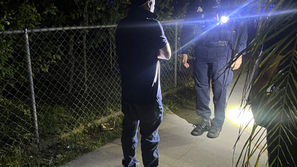Opinion: Freeway toll lanes: The bait-and-switch expands
- Tom Elias
- Jan 29, 2020
- 3 min read
Diamond lanes for the rich. Lexus lanes. A classic bait-and-switch. Social engineering on a massive scale. Taking the free out of freeways.
Republican officials working for then-President George W. Bush in 2008 didn’t apply any of those epithets to their plan to charge tolls and allow solo drivers into carpool lanes on freeways in some of the most crowded parts of California.
Rather, they dangled hundreds of millions of dollars in incentives before state and local officials to get them to adopt this benighted idea — and the locals bit, big time.
It started with a grant of more than $200 million about 10 years ago from Bush’s Department of Transportation, which turned existing carpool lanes into toll lanes on the Interstate 10 freeway in eastern Los Angeles County. The idea has spread, even though it does not really work.
As a result, many thousands of California drivers put transponders in their cars and get charged from 25 cents per mile on up for driving in lanes once occupied by carpoolers only — the result being that carpool lanes in many places are now as crowded as all the others.
Now an enormous expansion of toll lanes is in its early stages. This idea has three goals: Allow toll lane drivers to move at faster speeds than they do now. Make other lanes so congested that drivers switch to different modes of transport, where available. And convert as many existing carpool lanes to toll ones as possible in order to produce more and more revenue to finance ever more toll lanes.
The biggest new push is about to come in the 405 Freeway corridor between West Los Angeles and the vast San Fernando Valley portion of Los Angeles, a distance of about 10 miles of almost constant congestion despite California’s recent slow growth, which state officials say cost Los Angeles County about 96,000 residents over the last year.
More than $5 billion in local sales tax revenue is already available for this project, which would try to find space for two new toll lanes in the existing right-of-way, along with building a new, parallel north-south light-rail line, either on a monorail or in a multi-billion-dollar tunnel. With the Trump Administration not exactly in a giving mood toward California, the extra $4- to $9 billion this project would need likely must come from borrowing against future road tolls.
So drivers would essentially pay tolls to finance a plan aiming to get them out of their cars. All this because city planners — ignoring what happened when Los Angeles hosted the Olympic Games in 1984 — expect vast amounts of traffic during the upcoming 2028 Los Angeles Games.
Never mind that traffic was at historic lows during the ’84 event, partly because thousands of Angelenos went elsewhere during those Games to avoid massive traffic that never materialized.
Toll lanes are in the offing in many other places, too. Orange County planners contemplate new ones on four freeways there, with plans for new lanes rather than converting existing carpool ones. Toll lanes are also expected on several San Francisco Bay area freeways, including the 101 and 880 freeways, where carpool lanes would most likely be converted.
It’s all part of a steady “We know best” approach by city, state and county planners, who have never taken a public vote on toll lanes, first sold to voters as being reserved for carpools only, with tolls not mentioned. That makes all this a classic bait and switch.
No one knows whether the trend will lead to a public revolt on the scale of what happened in the mid-1970s, when then-Gov. Jerry Brown’s administration converted regular traffic lanes on the I-10 Santa Monica Freeway in West Los Angeles to carpools only. The outcry forced the state’s transportation director to resign and the lanes reverted. There are still no carpool lanes on that stretch of freeway.
Every time the public speaks on this issue, it opposes new toll lanes or anything else aimed at driving them out of their cars. But so far, there have been no rebellions at the ballot box. Does Gov. Gavin Newsom really want to bet on that passivity continuing?
• • •
Email Thomas Elias at tdelias@aol.com. His book, “The Burzynski Breakthrough: The Most Promising Cancer Treatment and the Government’s Campaign to Squelch It,” is now available in a soft cover fourth edition. For more Elias columns, visit www.californiafocus.net.
























Comments